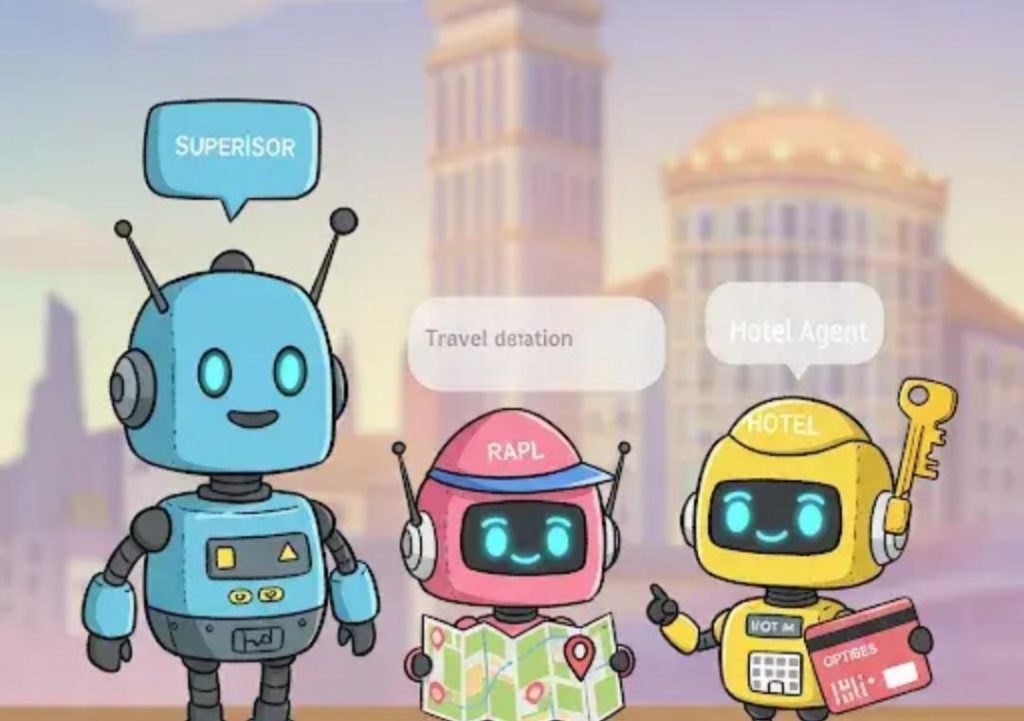
Multi-agent collaboration mimics real team dynamics
In today’s fast-paced digital landscape, Artificial Intelligence (AI) has become an essential tool for businesses to stay ahead of the competition. One of the most significant advancements in AI is the development of multi-agent systems, which enable different AI agents to collaborate and work together seamlessly. This approach mimics real-life team dynamics, where each member brings their unique skills and expertise to the table. In this blog post, we’ll explore the benefits of multi-agent collaboration and how it can revolutionize the way businesses work.
The Limitations of Single-Agent AI
In the past, AI systems were often limited to a single agent, designed to perform a specific task or function. While these single-agent systems can be effective, they have several limitations. For instance, they can be prone to bias, lack the ability to learn from each other, and may not be able to adapt to changing situations. Moreover, single-agent AI systems are often designed to perform a single task, which can lead to inefficiencies and reduced productivity.
The Power of Multi-Agent Collaboration
Multi-agent systems, on the other hand, allow multiple AI agents to work together to achieve a common goal. Each agent can specialize in a specific task or function, and they can communicate and collaborate with each other to achieve a shared objective. This modular setup enables businesses to create digital workflows that mirror human teamwork, but at machine speed and scale.
Benefits of Multi-Agent Collaboration
So, what are the benefits of multi-agent collaboration? Here are a few:
- Improved Task Completion: By distributing tasks among multiple agents, businesses can ensure that tasks are completed more efficiently and effectively. Each agent can focus on its specific task, reducing the likelihood of errors and increasing productivity.
- Enhanced Flexibility: Multi-agent systems can adapt to changing situations and tasks more easily than single-agent systems. Agents can communicate with each other and adjust their tasks accordingly, ensuring that the overall goal is achieved.
- Increased Scalability: Multi-agent systems can be designed to scale up or down as needed, making them ideal for businesses that experience fluctuating workloads.
- Better Decision-Making: By combining the strengths of multiple agents, businesses can make more informed decisions. Each agent brings its unique insights and perspectives to the table, ensuring that decisions are well-rounded and informed.
Real-World Applications of Multi-Agent Collaboration
So, how can businesses apply multi-agent collaboration in real-world scenarios? Here are a few examples:
- Research and Development: In R&D, multi-agent collaboration can be used to design and develop new products or services. Each agent can specialize in a specific aspect of the research process, such as data collection, analysis, and validation.
- Validation and Testing: Multi-agent systems can be used to validate and test products or services. Each agent can focus on a specific aspect of the testing process, such as functional testing, performance testing, and user acceptance testing.
- Reporting and Analysis: After a product or service has been developed and tested, multi-agent systems can be used to generate reports and analysis. Each agent can focus on a specific aspect of the reporting process, such as data visualization, statistical analysis, and narrative reporting.
- Customer Service: Multi-agent systems can be used to provide customer service. Each agent can specialize in a specific aspect of customer service, such as chatbots, email support, and phone support.
Conclusion
In conclusion, multi-agent collaboration is a game-changer for businesses looking to leverage the power of AI. By deploying a team of AI agents that can collaborate and communicate with each other, businesses can create digital workflows that mirror human teamwork, but at machine speed and scale. Whether it’s research and development, validation and testing, reporting and analysis, or customer service, multi-agent systems can help businesses achieve their goals more efficiently and effectively.
Source:



